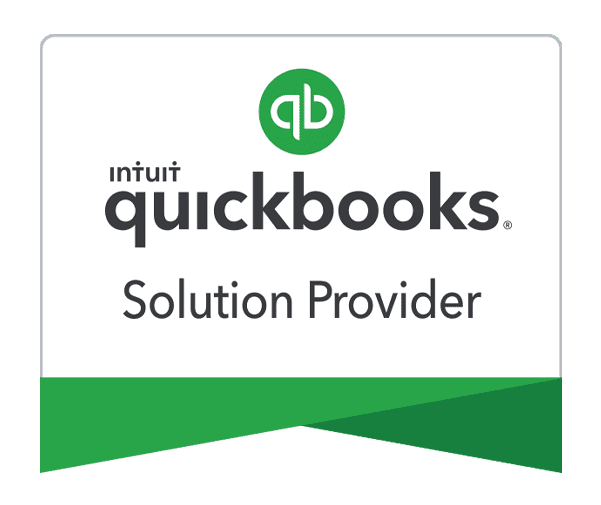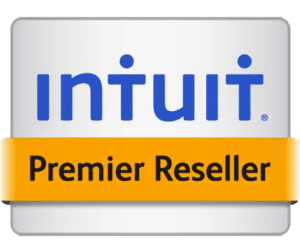
Paygration, Inc.
QuickBooks Online offers a range of tools to help businesses track and manage their inventory effectively. One of its fundamental features is basic inventory tracking. With QBO, businesses can monitor the quantities of products they buy and sell. This includes setting up items as inventory, tracking stock levels, and recording transactions for purchases and sales. While this feature provides a foundational framework for inventory management, it may lack the depth needed for more complex inventory needs.
Let’s delve into the intricacies of QuickBooks Online’s inventory management features to understand its functionality and limitations.
Inventory Tracking
QuickBooks Online’s basic inventory tracking feature allows businesses to maintain a record of the products they buy and sell. It serves as the backbone of inventory management, offering a straightforward method to track stock levels and monitor inventory movement. By setting up items as inventory, businesses can easily record transactions for purchases and sales, keeping their inventory records accurate and up-to-date.
This feature is particularly beneficial for smaller businesses or those with relatively simple inventory needs. However, for businesses with more complex inventory requirements, such as those dealing with assemblies or multiple warehouse locations, the basic tracking functionality may be insufficient, necessitating additional tools or customization.
Furthermore, QuickBooks Online’s basic inventory tracking provides businesses with essential insights into their stock levels, helping them make informed decisions about purchasing and sales strategies. By knowing the quantities of products on hand, businesses can avoid stockouts and overstock situations, optimizing their inventory levels to meet customer demand while minimizing carrying costs. While this feature lacks some of the advanced functionalities available in dedicated inventory management systems, it offers a user-friendly interface and seamless integration with other accounting functions in QuickBooks, making it a convenient option for many small to medium-sized businesses.
Learn how to set up inventory projects in QuickBooks Online.
Item Variants
QuickBooks Online’s item variants feature enables businesses to manage different variations of the same product within a single item entry. This functionality is particularly useful for businesses that offer products with multiple attributes, such as size, color, or style variations. By creating item variants, businesses can streamline their inventory management process, reducing the need for separate entries for each product variation. This not only simplifies inventory tracking but also helps maintain accurate stock levels across different product options. For example, a clothing retailer can create a single item entry for a T-shirt and specify variants for sizes (small, medium, large) and colors (red, blue, green).
Additionally, QuickBooks Online’s item variants feature improves the accuracy of product listings and helps businesses provide better customer service. By having detailed product variants recorded, businesses can fulfill customer orders more efficiently, ensuring they have the right product variations in stock. This feature also aids in generating accurate sales reports, as it allows businesses to track sales performance for each product variant separately. Overall, item variants enhance the flexibility and usability of QuickBooks Online’s inventory management, catering to businesses with diverse product offerings and customization options.
Cost Tracking
QuickBooks Online’s cost tracking feature allows businesses to monitor the cost of goods sold (COGS) and the overall value of their inventory. By assigning costs to inventory items, tracking purchase costs, and calculating COGS, businesses gain valuable insights into their profitability and inventory valuation. This feature is essential for accurate financial reporting, as it ensures that inventory costs are properly accounted for in the business’s financial statements. Additionally, cost tracking enables businesses to analyze their margins and make informed decisions about pricing and purchasing.
Furthermore, QuickBooks Online’s cost tracking feature helps businesses understand the financial impact of their inventory management decisions. By accurately tracking purchase costs and COGS, businesses can identify areas where costs can be reduced or efficiencies can be improved. This insight allows businesses to optimize their inventory management strategies, ultimately leading to increased profitability and competitiveness in the market.
Inventory Adjustments
QuickBooks Online allows businesses to make adjustments to their inventory quantities as needed. This feature is particularly useful for accounting for inventory discrepancies, such as loss, theft, or damage. Whether making adjustments manually or reconciling physical inventory counts, businesses can ensure that their inventory records remain accurate and up-to-date. By adjusting inventory quantities in QuickBooks Online, businesses can maintain the integrity of their inventory data and make informed decisions based on reliable information.
Additionally, inventory adjustments in QuickBooks Online facilitate compliance with accounting standards and regulatory requirements. Businesses can provide auditors with accurate inventory records, demonstrating transparency and accountability in their financial reporting. This feature also helps businesses identify and address issues with inventory management processes, such as shrinkage or overstocking, allowing them to optimize their operations for greater efficiency and profitability.
Inventory Reports
QuickBooks Online provides a variety of inventory reports to help businesses analyze their inventory status and performance. These reports offer valuable insights into inventory levels, turnover rates, and valuation, enabling businesses to make data-driven decisions about their inventory management strategies. For example, the Inventory Valuation Summary report provides an overview of the total value of inventory on hand, while the Inventory Stock Status report shows the quantities of each item in stock.
Furthermore, QuickBooks Online’s inventory reports help businesses identify trends and patterns in their inventory data, allowing them to forecast demand more accurately and plan their inventory purchases accordingly. By analyzing inventory reports regularly, businesses can optimize their stock levels, reduce carrying costs, and minimize the risk of stockouts or overstock situations. Overall, inventory reports in QuickBooks Online empower businesses to manage their inventory more efficiently and effectively, leading to improved profitability and customer satisfaction.
Purchase Orders
Managing purchase orders efficiently is essential for businesses to replenish their inventory levels in a timely manner. QuickBooks Online allows businesses to create and track purchase orders seamlessly within the platform. Businesses can generate purchase orders to order inventory items from suppliers, track the status of orders, and receive items into inventory upon delivery.
Additionally, QuickBooks Online’s purchase orders feature streamlines the procurement process, ensuring that businesses have the necessary stock on hand to fulfill customer orders. By creating purchase orders directly in QuickBooks Online, businesses can eliminate the need for manual entry and reduce the risk of errors or delays in the ordering process. This feature also provides visibility into pending orders, allowing businesses to track the status of each order and follow up with suppliers as needed.
Sales Orders
QuickBooks Online supports sales orders, enabling businesses to manage customer orders for inventory items efficiently. Businesses can create sales orders to reserve inventory for future sales, track order fulfillment, and convert sales orders into invoices when products are shipped to customers.
Moreover, QuickBooks Online’s sales orders feature helps businesses prioritize and manage customer orders effectively. By creating sales orders, businesses can reserve inventory for specific customers or orders, ensuring that stock is available when needed. This helps prevent stockouts and backorders, improving customer satisfaction and retention. Additionally, sales orders provide visibility into upcoming sales and order fulfillment requirements, allowing businesses to plan their inventory purchases and production schedules accordingly.
FIFO Costing Method
QuickBooks Online offers the FIFO (First In, First Out) costing method for inventory valuation. FIFO assumes that the first items purchased or produced are the first ones sold, providing a more accurate reflection of current inventory costs and ensuring compliance with accounting standards.
Additionally, the FIFO costing method in QuickBooks Online helps businesses track inventory costs more effectively. By using FIFO, businesses can calculate the cost of goods sold (COGS) based on the cost of the oldest inventory items first, resulting in more accurate cost calculations and financial reporting. This enables businesses to better understand their profitability and make informed decisions about pricing and purchasing. Moreover, FIFO ensures that inventory valuation reflects current market prices, allowing businesses to maintain accurate financial records and comply with accounting regulations.
Learn more about FIFO inventory in QuickBooks Online.
Conclusion
At the end of the day, it’s essential for businesses to evaluate their specific inventory requirements and determine if QuickBooks Online meets their needs adequately. For businesses with more complex inventory management needs, a dedicated inventory management system or QuickBooks Desktop may be more suitable. Regardless of your business’s requirements, consulting with experts like Paygration can provide valuable insights and assistance in selecting the right solution.
Contact Paygration today at 866-949-7267 for a free demo and consultation for QuickBooks Online. Our team of experts will assess your business needs and provide personalized recommendations to help you make the most of QuickBooks Online’s inventory management capabilities. Don’t hesitate to reach out and optimize your inventory management processes today.
















